Making a Qwiic Escape
Escape Rooms have been a quiet obsession of mine for the past several years, I “subtly” suggest them for nights out, birthdays or team builds whenever I can. Once inside the Time-sensitive puzzle I often find myself spending time examining the puzzle after the solution has been found. This no doubt causes some amount of heart-burn among my fellow Escapees who are actively trying to figure out the NEXT puzzle. In recent years there has been a proliferation of micro-controllers and electronics used in these puzzles leading to many, “How did they do that?!” moments. Since starting here at Sparkfun, there has been a desire to start making puzzles of my own and the recent Qwiic boards made it fast and easy to put a couple together. Now I can finally stop gazing into that opened cabinet and focus on finding what that brass key unlocks...
Escape Rooms
If you are not familiar with Escape rooms, they are essentially a series of puzzles that when completed “free” you from the room. They are often tackled as a group and there is often a time limit that adds excitement and urgency. Sparkfun has even gotten a tour of a local Escape Room. Often you will need to hold onto a Key, piece of coded information or a clue through several puzzles before you find their relevancy.
Our Qwiic System
The Qwiic Escape box showcases a couple of examples of puzzles similar to what you would find in an escape room. Often time the reward for solving a puzzle in the room is an opened door, drawer or cabinet that offers more clues towards another puzzle. I wanted to show three different triggers that open a locked cabinet. The unlocking mechanism is a simple 12V Solenoid drawer latch that is connected to the Qwiic Quad Relay. This allows control of High Voltage devices such as the Solenoid and some 12V LEDS with a lower power device such as the Redboard Qwiic. When our Redboard receives the correct input over I2C it can send a signal to the relay to activate the solenoid and start the lights. All devices are on the same I2C bus which allows for easy commands and communication.
Trigger one: Qwiic RFID
RFID is one of the most common technologies that you see in escape rooms. Often you will need to place an object or objects in the correct positions or in the correct order. I 3D printed a key and placed a glass capsule RFID tag inside. When the reader picks up a tag ID, the Redboard compares that ID to the specific tag of the Glass capsule. If it’s a match, then it sends a command to our Qwiic relay which activates our Solenoid latch and LEDS. And Voila~
Trigger Two: Qwiic Keypad
What is a Keypad but an array of buttons? Button arrays are also often found in escape rooms often with eldritch symbols or hieroglyphics. If the astute puzzler enters the Eleet code needed, they will be rewarded. As the keypad’s buttons are depressed it sends a communication to our Redboard of what button was pressed and when. If the correct arrangement is pressed within a certain time window then Redboard recognizes this and sends those familiar commands to the Qwiic Quad Relay.
Trigger Three: Photo Cells
Finally I wanted to connect a familiar product that all S.I.K. owners know well. The Photo Cell Resistor!
The Photo Resistors change resistance depending on the amount of light that it is exposed to. I connected the photo cells to the 5v output of the Redboard and I am reading their input on the analog pins. Please take a gander at our Tutorial if you’d like to see a diagram.
The photo resistors are placed inside the eyes of this desperate man and when “blinded” we can read that state with our Redboard and activate the Quad Relay.
Final Thoughts
The pairing of the I2C communication with solderless Qwiic Connectors made prototyping this project a breeze. Don’t get me wrong, I love soldering, moving molten tin is my jam, but having the option to test before committing to the iron was a huge time saver. Often I’ll solder wires and connection points only to find that I need a longer wire or I need to change the orientation of a sensor. I was able to individually test out code with each device before plugging it all together on the same I2C BUS. For my next Escape Room styled project I would find a more elegant power solution that a host of 12V wall-warts tied into the Quad Relay.
Puzzles are a hot topic here at Sparkfun and invite to you check out our Innovative Puzzle Board
As well as some of the great content that community has shared with us.
Please share your thoughts in the comments and go support your local escape room!
If you are interested in building your own Qwiic Project, here is a wishlist of what I used and keep an eye out for the upcoming Qwiic Kit!
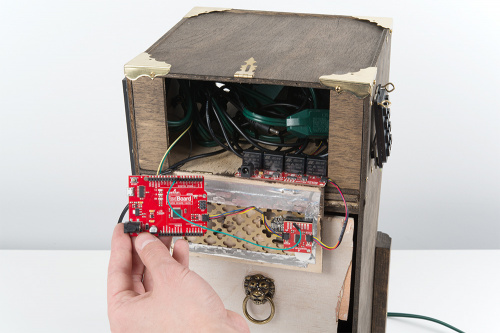
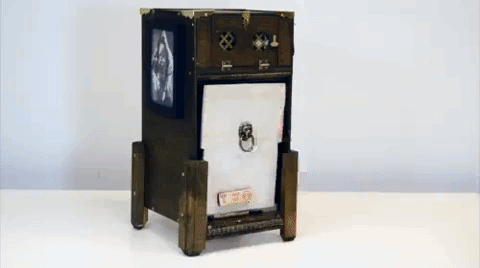
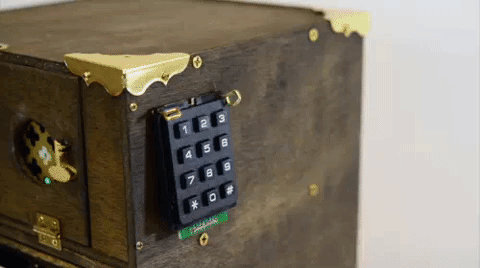

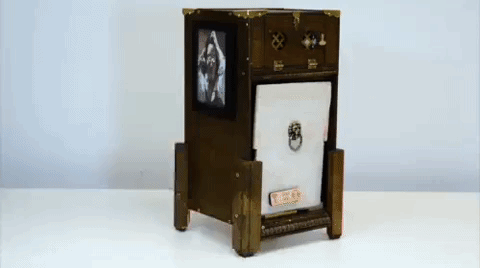
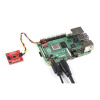
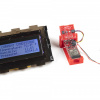






Excellent re-use of the beating heart in a jar project enclosure. I was hoping someone would give that little cabinet a second life. I spent literally dozens of minutes crafting that!
I was wondering who created that cabinet. It looks sooooo cool. =P
This is so awesome! I don't have the business acumen to open an escape room of my own - but I've always thought it would be fun to put on an escape room-esque game night for friends at my own place. Stuff like this would be perfect for something like that... Do the parts need to be connected physically - Or could that keypad exist on the other side of the room?
That is a great idea, you have lucky friends! There are two solutions that come to mind but If anyone else has one please chime in. The I2C bus is not as effective once you stretch the lines over a large distance, say a room, but you could run the power cables from the Solenoid and the Lights to wherever you host your Keypad/Relay. This would effectively allow you have the keypad on one side of the room and the locked door on the other. In terms of going a more " Wireless' route " I would highly recommend checking out the new ESP32 Wroom. It has Wifi, bluetooth and a Qwiic Connector! You could have one paired with your Keypad, another with your Relay and they pass the signal wirelessly to each other. Oooh, I really like that idea...time for a new project. Thanks for the Comment!
The links at the end of your article, for AVR treasure chest and GeoCashed puzzle are swapped. And the link at the end of the AVR treasure chest "Read all about the project here", should be changed to http://azroboticcombat.com/KellyRobots/tc_main.html . The Cox link went away some time ago. thanks!
Great Catch, Thank you! The AVR Treasure Chest project was really well done, Glad to make sure more people can also enjoy it.
Great, thanks!
I don't want to be a kill-joy, but one thing I'd check on before going anywhere near an "escape room" is to verify that they either have a "dungeon master" continuously monitoring, or at the very least some sort of "emergency PANIC LET ME OUT!" button. There have been news reports of instances in other countries where people died because of fire breaking out and the "participants" being trapped.
It is a neat project, though. One tip (at least for others) is that it looks like Adafruit's Lock-style Solenoid might work for this project. (I haven't tried it myself, though.)
That's a healthy step to take before committing yourself to a locked room. In my experience with Escape Rooms, they typically do not lock the door behind you for those kind of safety reasons. Often they rely on the thrill of the puzzle hunt to keep folks from walking out early and claiming Victory!
There is an abundance of great options for Solenoid latches out there, that particular one has a different latch orientation than what I needed for the hinge. We are looking into sourcing some great Solenoid latches as well speak to keep an eye out for that! Thanks for the comment!
FWIW, if you look at the description for the Adafruit one, they say that you can "rotate" it in the mount by 90, 180, or 270 degrees, though you need a Phillips screwdriver to do so.
Annnnnnd we now have a latching solenoid in the catalog => [ https://www.sparkfun.com/products/15324 ]. =P
I would love to see the schematics and code, especially for the keypad! I am currently designing a similiar project, an escape room model using the Qwiic system, with a qwiic keypad that turns on a solenoid with the correct input. Please let me know if you still have it available :)
Hi there, it sounds like you are looking for technical assistance. Please use the link in the banner above, to get started with posting a topic in our forums. Our technical support team will do their best to assist you.
That being said, all the information for our products are listed on the product pages. If you use the link from the wishlist above, it will redirect to the current version of the Qwiic Keypad. You can also, search for the product page by entering "Qwiic Keypad" in the search bar, at the top of the page.
Am I missing the links for schematics and other details? Or is that beyond the scope of Eginursdays?
Thanks for the inquiry! If there is interest I will happily add a Diagram and the code to the post. Check back soon!